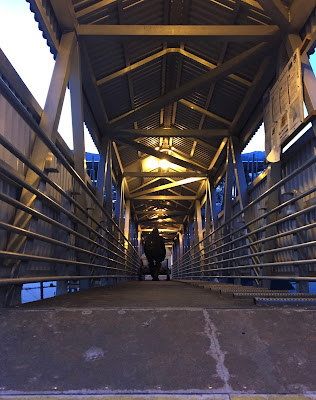 |
| Good pun! |
 |
| High and Dry |
It's important to pay attention to tides when you are boating or cruising on bodies of water that are not lakes or rivers. There are several ways we check the level of tides, and at what time they occur.
One of ipads is dedicated to Garmin Charts, it has a selection to view the tides at the location that is shown on the screen.
 |
| High and low for the day at Wrangell. |
In Alaska, you'll find these 5"x3" booklet Tide Tables in every outdoor store, and they are free, take as many as you need. I was really surprised one time in Washington to find a tide table book that had a price on it! You have to decide which region you want to know about, and they can be $5.00 to $16.00. The internet can also give you the information you need, but what if you are in a place without a wifi or cell signal? It's better to be prepared in advance.
 |
| They come with different covers too, pick your favorite! |
There are also apps, (of course), for tides.
 |
Wikipedia:
The rule of twelfths is an approximation to a sine curve. It can be used as a rule of thumb for estimating the height of the tide at any time, given only the time and height of high and low water.
We even have to be aware of the tides when we are in the marina.
You may recall the evening in November, when I posted this on Facebook Denali Rose Sailboat, we had a full moon, and a minus tide which caused Denali Rose to gently sit on her keel in her slip. (As in NO water under her.) It was very disconcerting to see the depth gauge at 0.
 |
| A minus 4.6, settled the keel in the mud. |
Denali Rose draws 6.3 feet, and our gauge is set at what the water level is under the keel. For instance, if the gauge reads 16 feet, then it is really 22 feet deep. The previous owner set it up this way, and we left it. We have since had a diver check out her bottom, and he said it was all good.
Carrying items to the boat can be interesting if you haven't timed the trip at the correct time. The ramps to the docks move up and down with the tide level.
 |
| Steep! |
The ramp can be quite steep at a minus tide, this is Bill with a load in a dock cart, being very careful on his way down the ramp. Hopefully no one is standing in the way at the bottom. That's one of our safety rules, the dock cart goes first, and everyone else follows it.
After all, we wouldn't want to damage or drop the wine!
 |
| Even the wine needs a PFD. |
Do you know the rule of twelfths? Let us know here in comments, or on our Facebook Denali Rose Sailboat page.







































